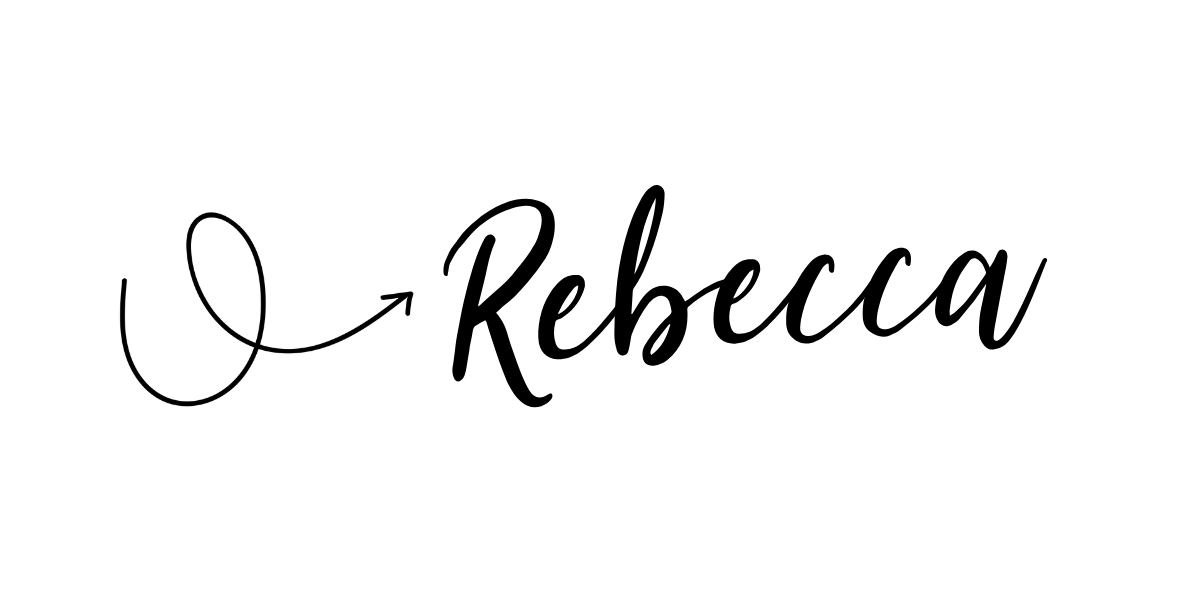Shopping for homeschool math curriculum can be daunting. Everywhere you look someone has a different recommendation and let’s face it, homeschool moms are passionate about their curriculum! Bring to base your decision off of what you can gather online is time consuming and can feel stressful when you don’t really know for certain if that program is going to be a good fit for you. Enter this homeschool math comparison review… I have done all the legwork for you. I have purchased all the top math programs including: Math U See, Math Lessons for a Living Education, Teaching Textbooks, A Beka, Horizons, Singapore, Life of Fred, JUMP, RightStart, Saxon, and Strayer-Upton and put together the most comprehensive review you can find. I have charts to help you compare at a glance, I have price comparisons and pictures, I even have a detailed video with flip throughs of my books! Let me help you make a confident decision in your math program this year!

Homeschool Math Comparison Chart
I want to start with a chart before I go into each program because I know that you are a busy homeschool mom and there is going to be a TON of information here and I don’t want to overwhelm you. Use this chart to start identifying programs that right from the get go you don’t think will work for you. Eliminate those off your list and just read up on the curriculums you are deciding between. This will help save you time and help you see the bigger picture with topics such as budget, time per day needed (by both you and the child), and learning styles. Before we begin, it will be really helpful for you to understand your child’s learning style (take the free quiz) and your own homeschool style (take the free quiz) as those are going to be referenced in the review below.
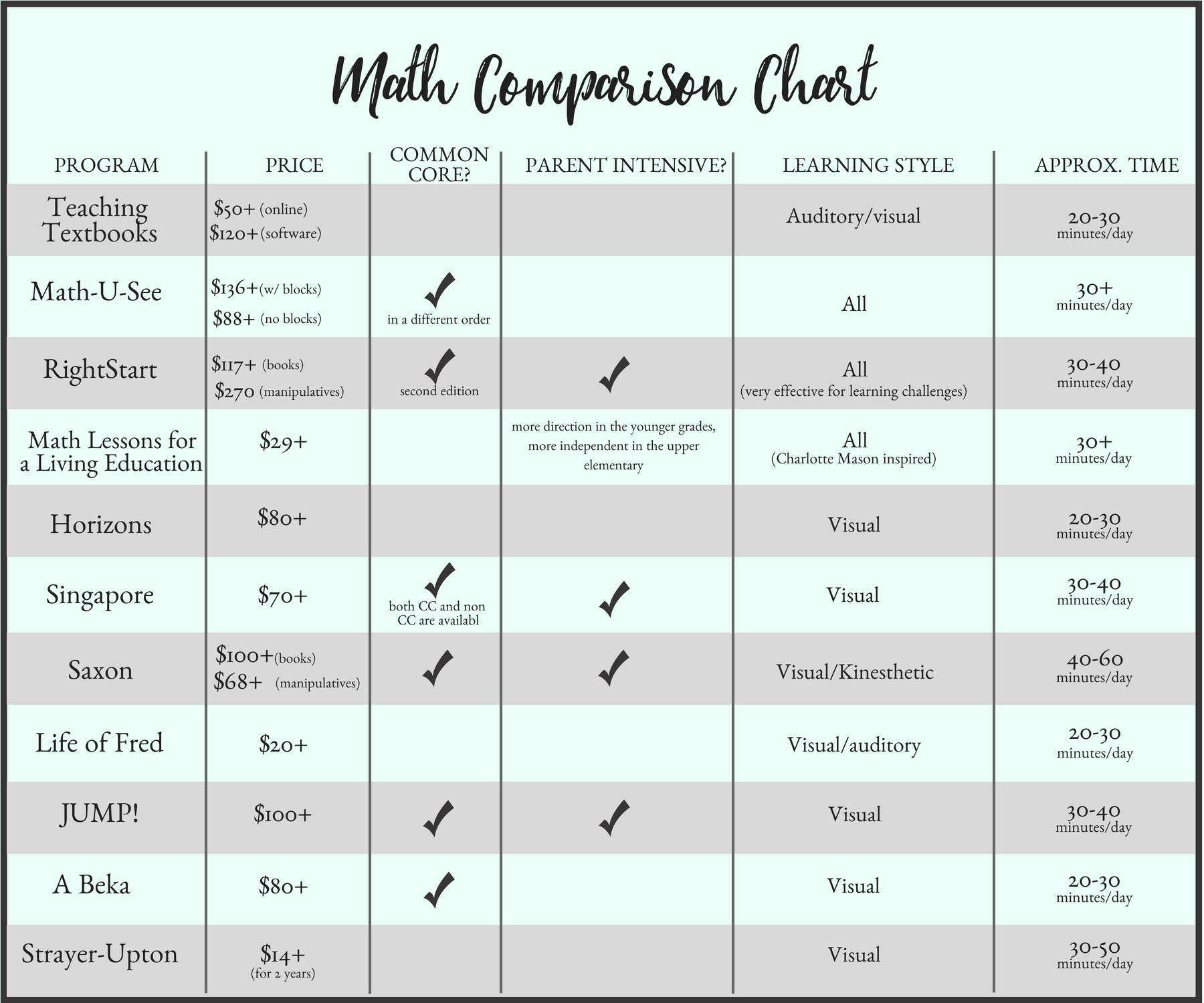
Teaching Textbooks
Teaching Textbooks is a favourite amongst homeschool moms because of it’s ease of use. There are software discs that you can use along with textbooks/workbooks or you can choose to try out their new online version of the program. The online version can only be used for 1 child for 1 year but it does have the option of pausing your subscription for up to 3 months for vacations and summer break. It is also more affordable than the software version and a great way to test out the program to see if it will work for your family. Teaching Textbooks is spiral in it’s approach with review built right into the program. It is secular in it’s viewpoint.
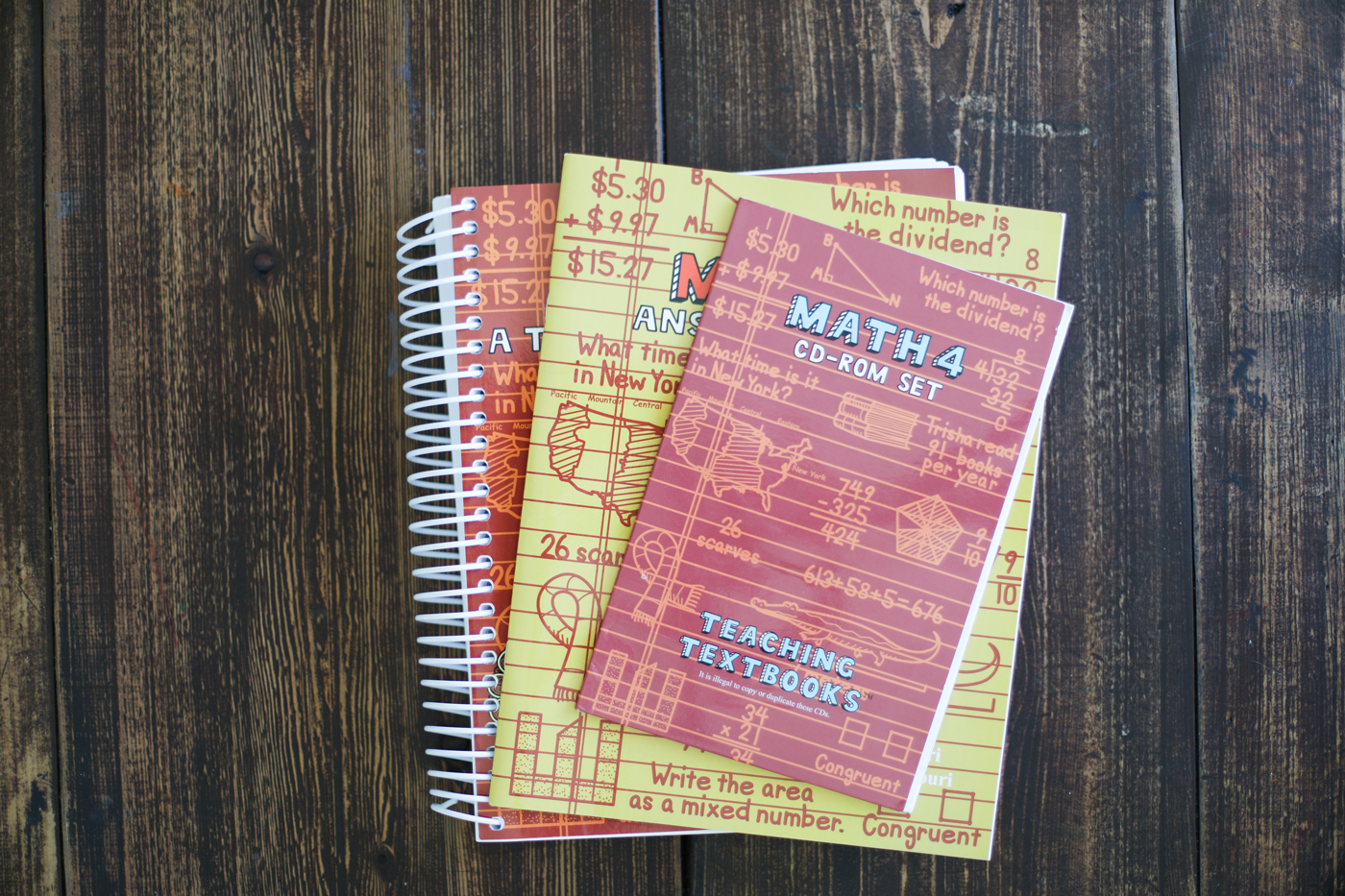
Teaching Textbooks
This program will be ideal for families that don’t have a lot of time or where mom feels totally overwhelmed with math. It is easy to use, covers all the basics in a sequential way and works well with auditory children. It marks and grades right within the program, which is great for both reporting purposes (if that is required in your state/province) as well as to get a snapshot of where your child is at. It may not work well for you if you don’t want any computer or iPads in your homeschool day as this will require some form of technology to use. It also may not work well for students that need more of a hands on component or struggle with math. You can learn more about them and check out their new online 3.0 version on their website.
Math U See
Math U See is a comprehensive math program with a mastery approach as opposed to something more spiral and is secular in it’s perspective. It focuses on one main topic per school year, taking the child from introduction to mastery along the way. There is a lot of debate as to whether it is common core aligned or not and after reading their website I can tell you this: because of the mastery approach it does meet common core standards but in a different timeline. Math U See will eventually meet standards if you continue using it through all of the levels but each level is not written directly to the corresponding grade levels core standards (does that make sense?).
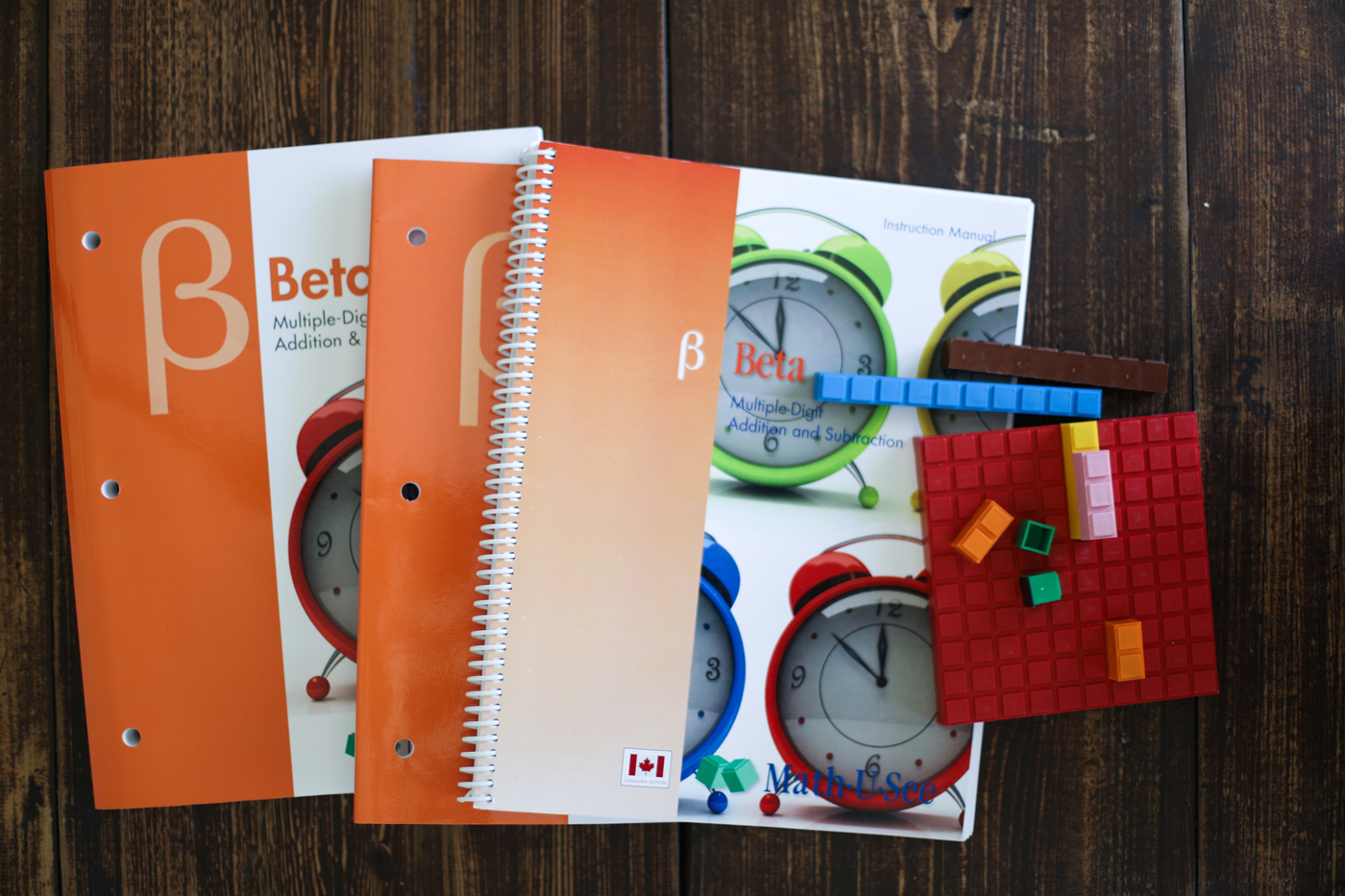
Your first year with Math U See is more expensive because it requires you to buy the complete Universal set with the blocks for your manipulatives. However, the longer you use the program the more affordable it becomes, especially for adding in younger students that can reuse the teacher resources/DVDs. Each week would start with a video lesson and then have worksheets to reinforce that lesson. This works well for auditory learners as well as kinesthetic and visual learners however it can be overkill for some families. Take a look through the video to get an idea of the lesson worksheets and check out more details on their website.
RightStart
RightStart is the most expensive of the math programs I am showing you today. It is also one of the most comprehensive programs that has both spiral and mastery built into it. It is a secular program that is scripted, meaning mom just opens up the instructor book and reads to the child. It has daily review built in, clear visuals of what you need from your manipulatives kit and how to use them, instructions for card games to reinforce the lessons and built mastery, as well as a workbook for the child to work through. I have seen elements of Charlotte Mason in this program as well, with a math journal at the back that children copy math facts onto and new math concepts, etc. onto the grid notepaper. it is teacher intensive, every lesson in the earlier grades being written in a scripted format to be read to the child and new games to be taught. It doesn’t require any prep time, being very open-and-go, however it does require one-on-one instruction from the parent.

RightStart does meet common core standards in the second edition. If parents are wary of common core, they can simply by the first edition of the program instead. This program is recommended for families who have children that struggle with math, are very kinesthetic or hands on, and/or have learning challenges that make math a struggle. It has proven incredibly successful for families to help children find confidence and begin to enjoy math rather than dread it but is definitely more expensive to begin with. Check out their site to learn more!
Math Lessons for a Living Education
Math Lessons for a Living Education is a Charlotte Mason inspired math program that blends a mastery and spiral approach with a simple, story-based learning model. It is very Christian in it’s perspective, which doesn’t work well for all families and is something to be considered. It is incredibly affordable starting at less than $30 and only requires one book, the younger grades being written to the parent and level 3 and up being written to the child. The stories help bring in a practical life application and build connection with concepts of math in the real world around them, which is really effective for children that need to understand the big picture in order to really master a concept.
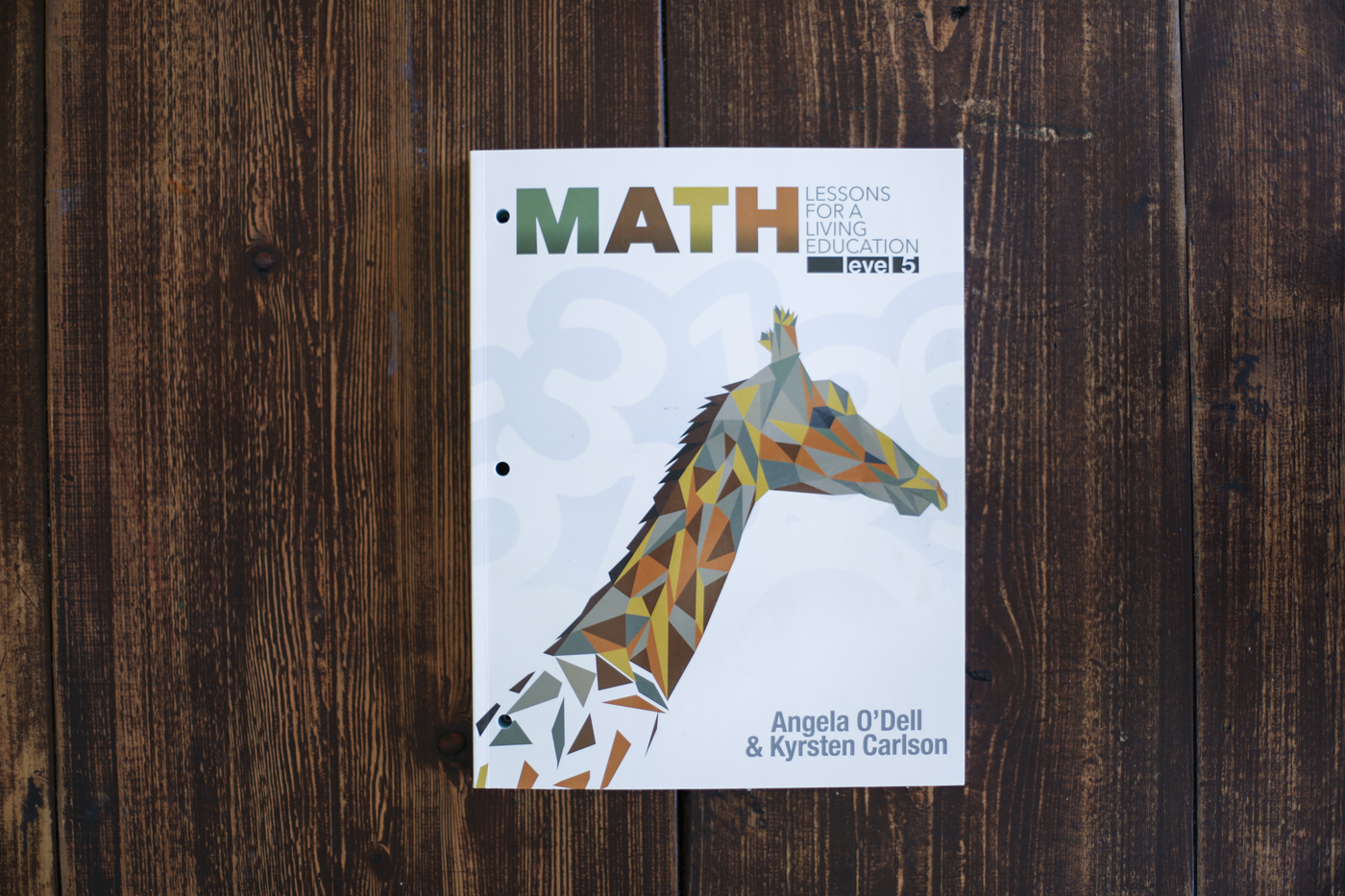
The lessons are very easy to use, with a story the first day of the week and lesson pages to work through throughout the week. There is a schedule to follow at the front of the book and the pages are perforated and hole punched so that they can be used in multiple ways for the student. Math Lessons for a Living Education is not common core aligned. I have several reviews on the program here and you can also learn more on my various live video chats about it here. Check out their site and download a sample or take the placement test below.
Horizons
Horizons math is a bright, workbook-style math program with a spiral approach. It works well for visual learners or families that need something that can be done more independently in an open-and-go fashion. Horizons is a Christian company, however the math is pretty focused on math concepts and could easily be used by secular families as well.
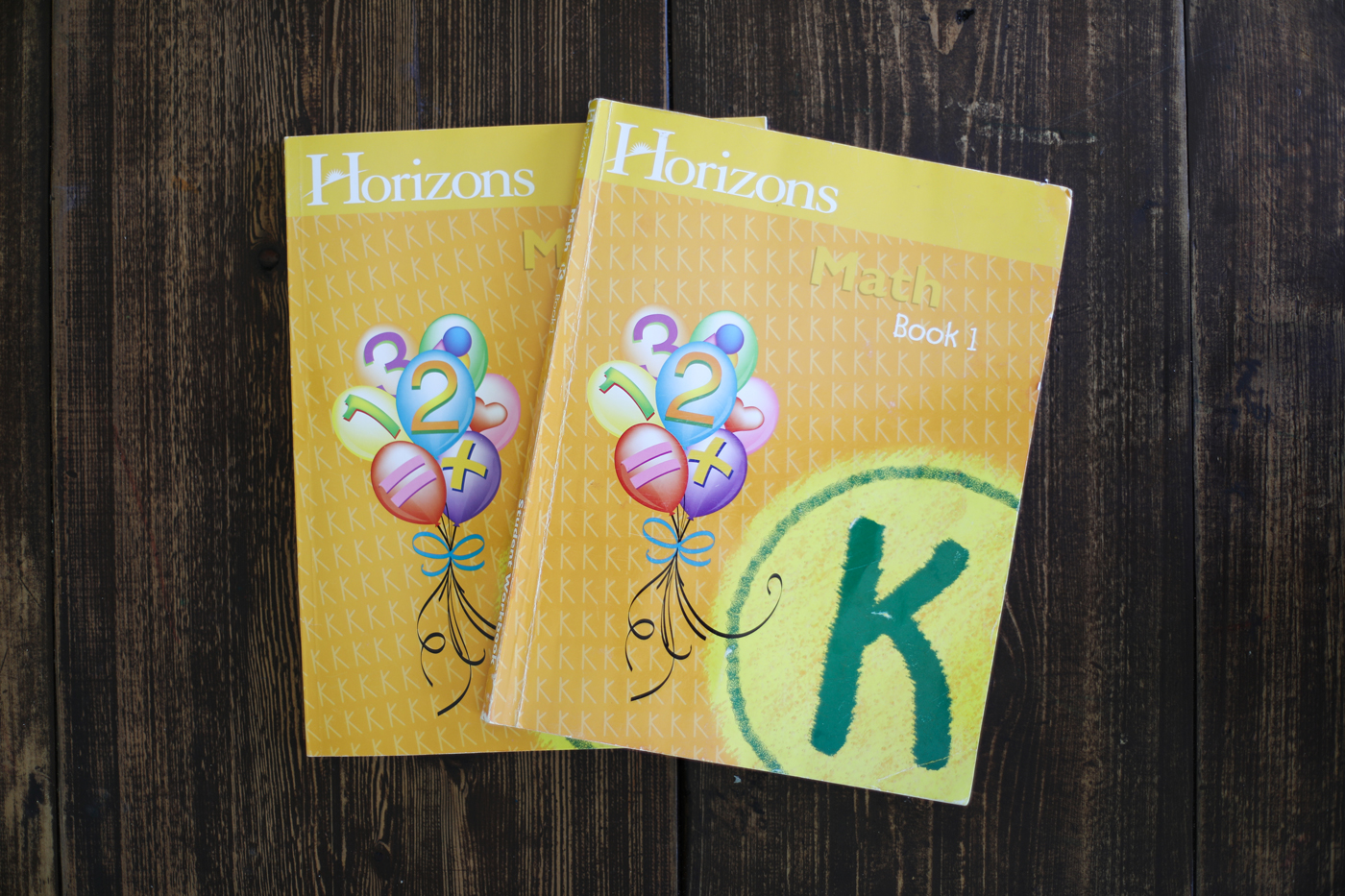
Horizons is not common core and works well for children that love worksheets or are visual learners. It is ideal for more traditional homeschool families and relatively affordable to get started with. The teachers manual clearly lays out the lessons for the teacher and you could add in some manipulative packages to help reinforce the lesson concepts in a more hands on way, though there isn’t one specifically made for this program.
Singapore
Singapore math curriculum is a blend of both a traditional math approach (textbook and workbook style) with an out-of-the-box strategy. It is based upon the math model in Singapore where students score much higher in math than here in North America. There are three different versions of the program and only the common core version is common core aligned so there are options for families to choose based on their opinions of common core. There is a home instructors handbook (not shown here) that I have heard marvellous things about and really gives extra instruction and insight to the parent in how to use the program more effectively with your child (read a great review about it here).
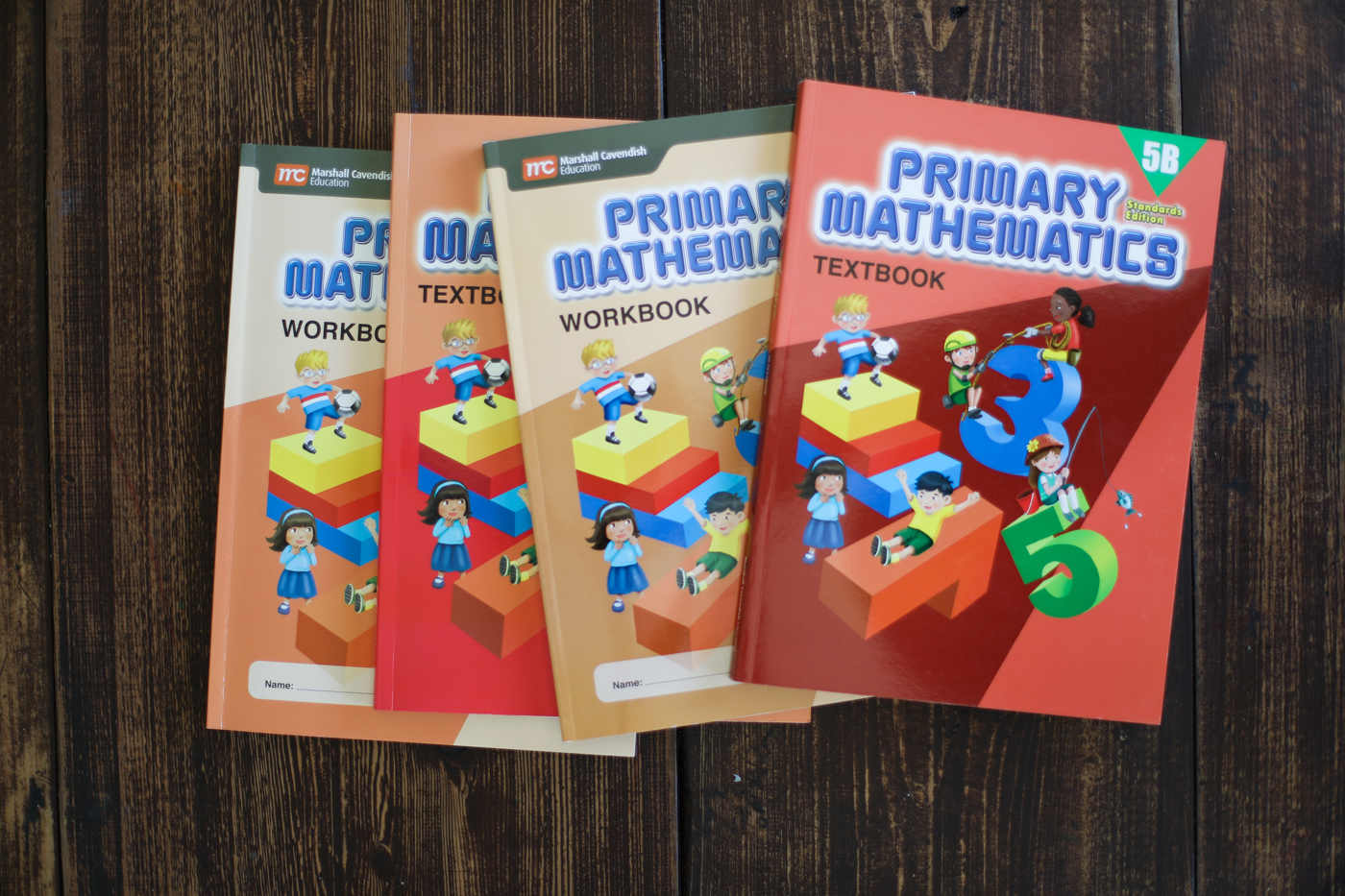
Being quite different in it’s approach to learning, it is not really spiral or mastery in the traditional sense, but rather it brings in multiple facets of learning for each new concept learned. Amongst math curriculums, it is known as a more advanced program and often revered in families that either strongly value math or have children that are naturally good at it that want to challenge their children. That is not to say that if your child struggles with math that they won’t enjoy this program, it is just an indicator of the type of families that are drawn to the program. Check out the books online below!
Saxon
Saxon is the one program I couldn’t get my hands on here in Canada to review for you. First of all, it was VERY expensive to buy when I was pretty sure it wouldn’t be something I would continue with and secondly, there are very few people that will even sell it to Canadians. But I wanted to at least mention it here as another option that also works well for families that are looking for more advanced math for their kids, that aligns with common core, and yet has a manipulatives kit for more hands-on instruction as well. Check it out below and chime in if you have thoughts on this math program in the comments!
Life of Fred
Life of Fred is a math program that is more commonly used as a supplemental resource rather than a full curriculum (though some families use this alone). It is a secular, story-based math program that is neither spiral or mastery, but instead has funny stories that children love and more word-problem discussion questions to help the children master the concepts. It is a secular option for families that want story based math and is really effective for children who are more or less disinterested in school.
Until your child is reading independently, this would be a bit more teacher intensive than some of the other programs because you would be reading the stories and doing the problems alongside your child.
JUMP!
Jump math is available in both US and Canadian versions. It was written more or less to be used in a school setting however they do have homeschool resources available as well. The lessons are very simple and based more on sequential concepts than anything else. There is a teacher manual but it is not available for purchase. You will need to create a free account to access additional materials on the website to teach the program. The math is common core aligned and meets standards for the country you purchase it in as it is primarily created for schools. This works well for some families and has a ton of hands on activities and games to reinforce the learning. However, it is much more teacher intensive and takes more time to teach.
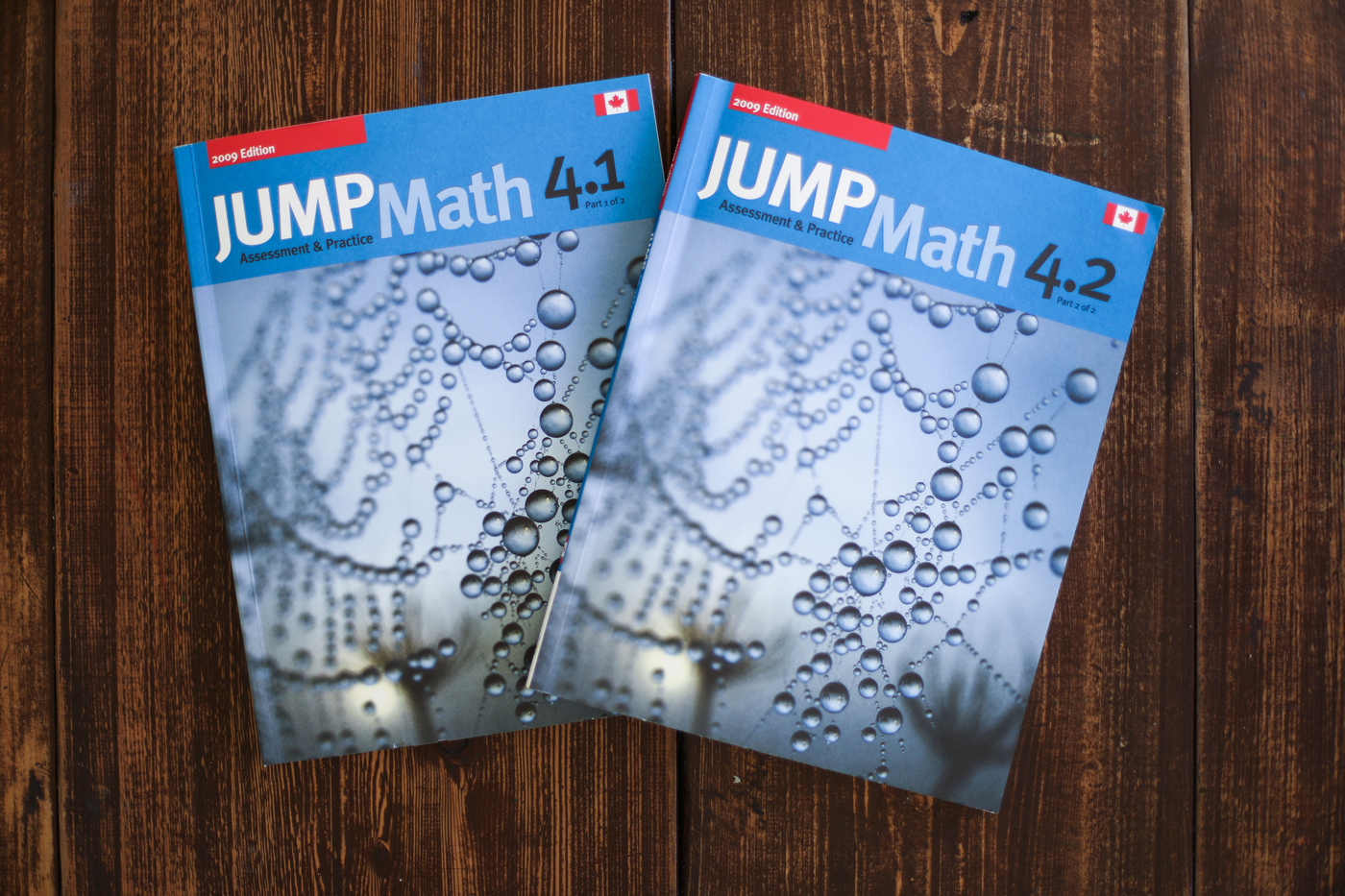
JUMP is secular in it’s perspective and spiral in it’s approach. It works best for families that want to align with common core or local school standards and yet want something more engaging with their children. It also works best for families that have the time to really invest in the program as it puts all the teaching aspect onto the parent.
A Beka
A Beka math is more traditional in it’s approach, being an open-and-go workbook style of math. It is bright and colourful and definitely more advanced in it’s topics so it is important to understand your child’s level before placing them. It works best for more traditional homeschoolers and families that need something that is just open and go. It works best for children that are more visual in their learning approach and enjoy worksheets. It is a spiral program written from a Christian publisher and yet, not containing a whole lot of Christian content (therefore you could totally use this if you are a secular family).

The lessons are easy to use, it is about 2 pages of worksheets a day and it comes with your student books, quizzes, teacher guide, answer key, etc. It does not work as well for families that have children who struggle in math, need a more mastery approach, or are kinesthetic as there are no manipulatives or hands on components to the program.
Strayer-Upton
This is one that I did not mention in my video, however it is a very affordable option for families. Just $19 for two years of math, it starts at grade 3. The math books are not textbooks or workbooks, they are vintage math programs originally published in the early 1900’s and still carrying the same principles. The children will read a few pages a day, instruction is built right in to the lessons, and they would have a grid notebook or notebook to work out their math problems on. There is no answer key, there is no parent instruction, it is written to the child. Money problems are based on making cents per day and yet the same principles apply.

Word problems, drills, games, bookwork, and more is all included in these books and they are super easy to use. If you love the old school style of teaching these may be a good fit for your family! I’ll post some pictures below for you to get a better idea of the program.
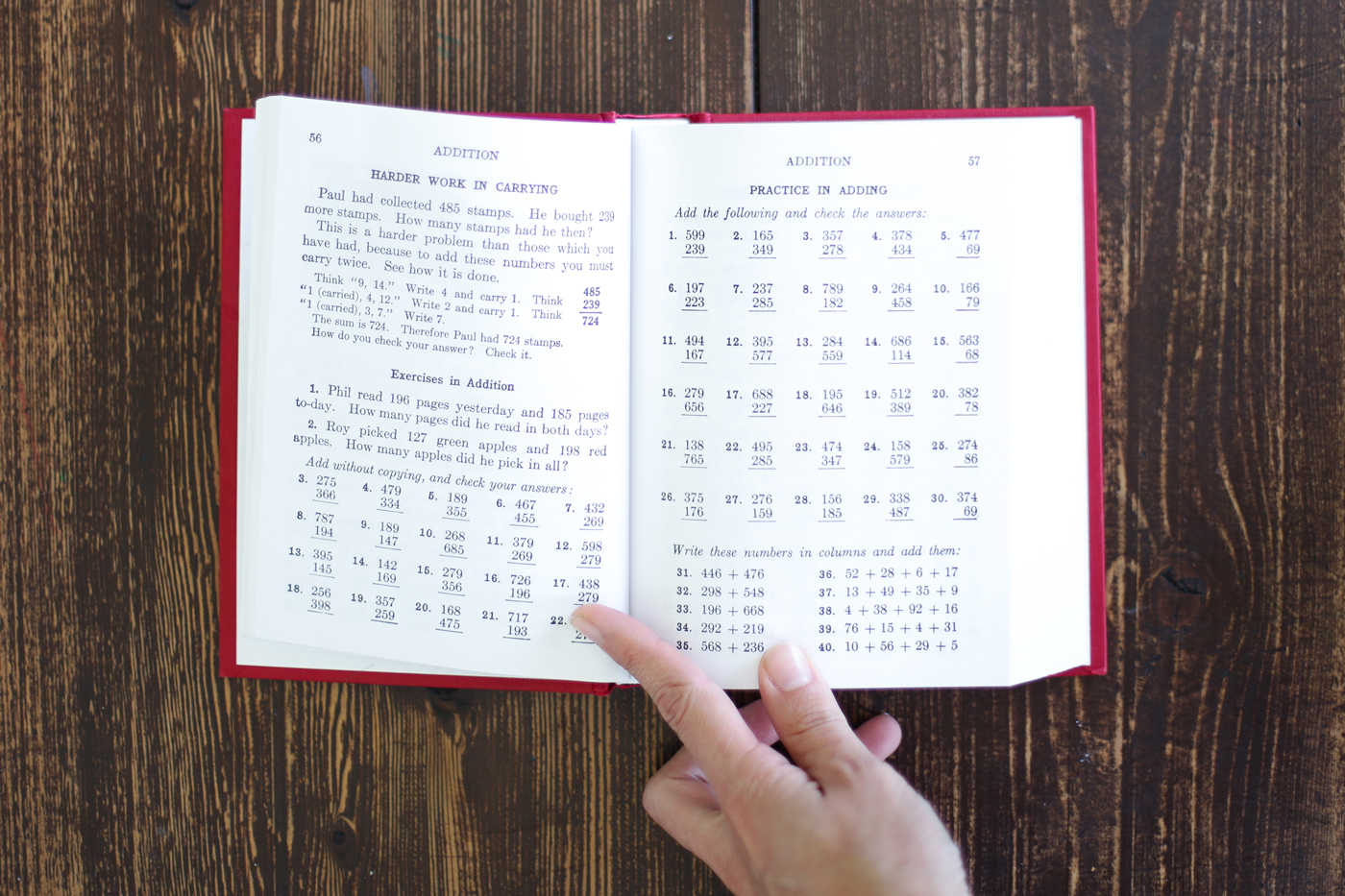

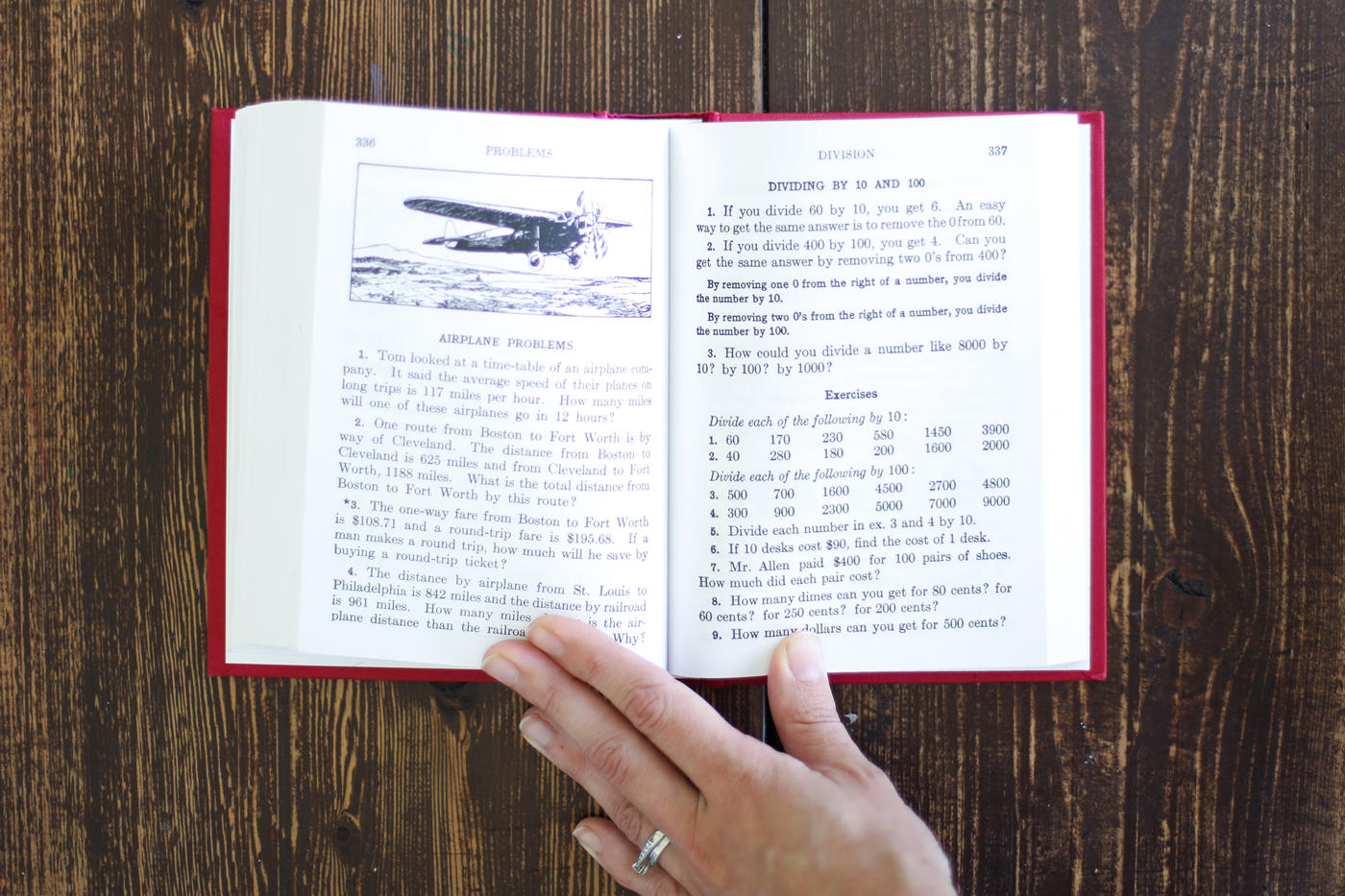
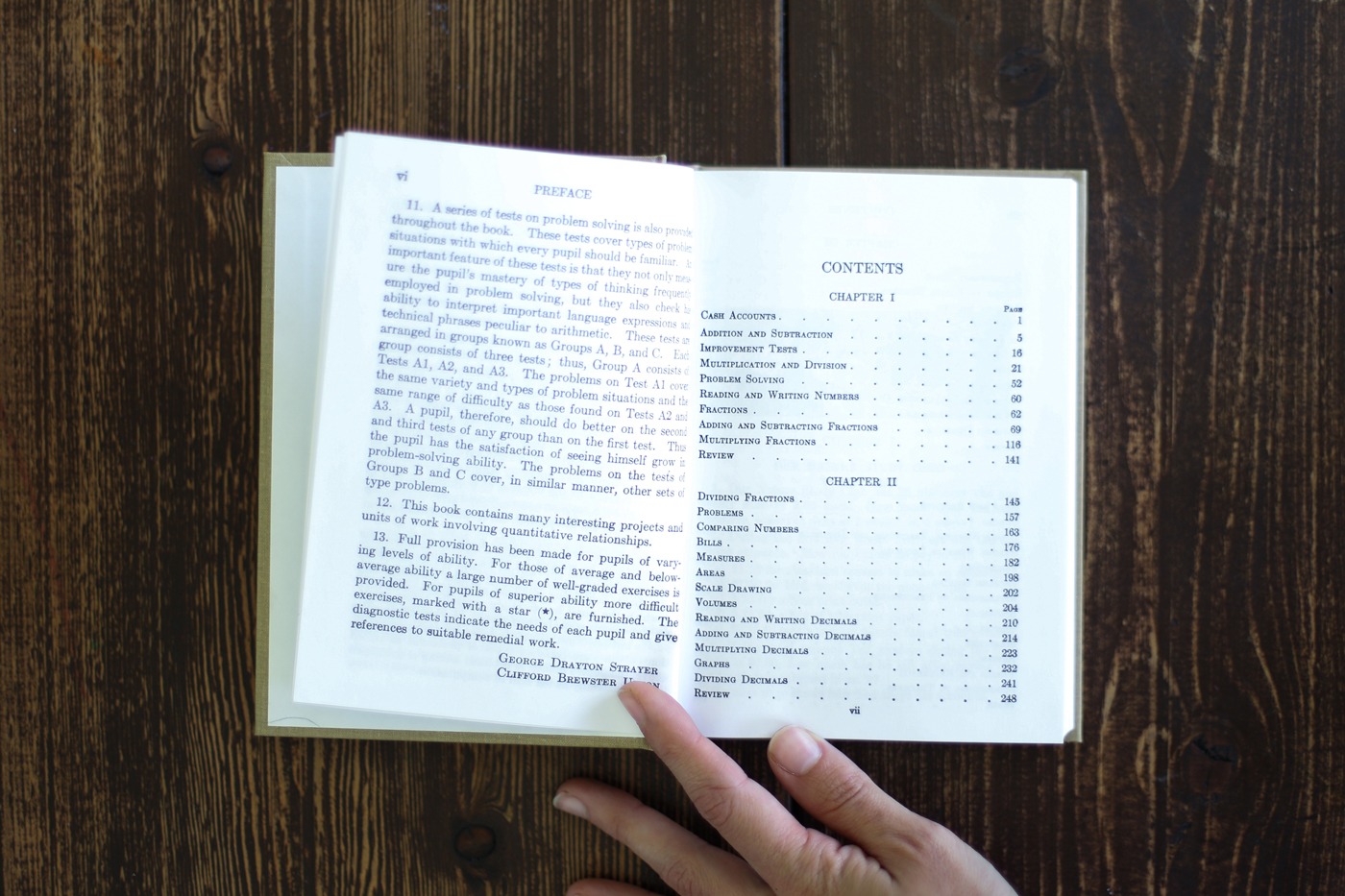
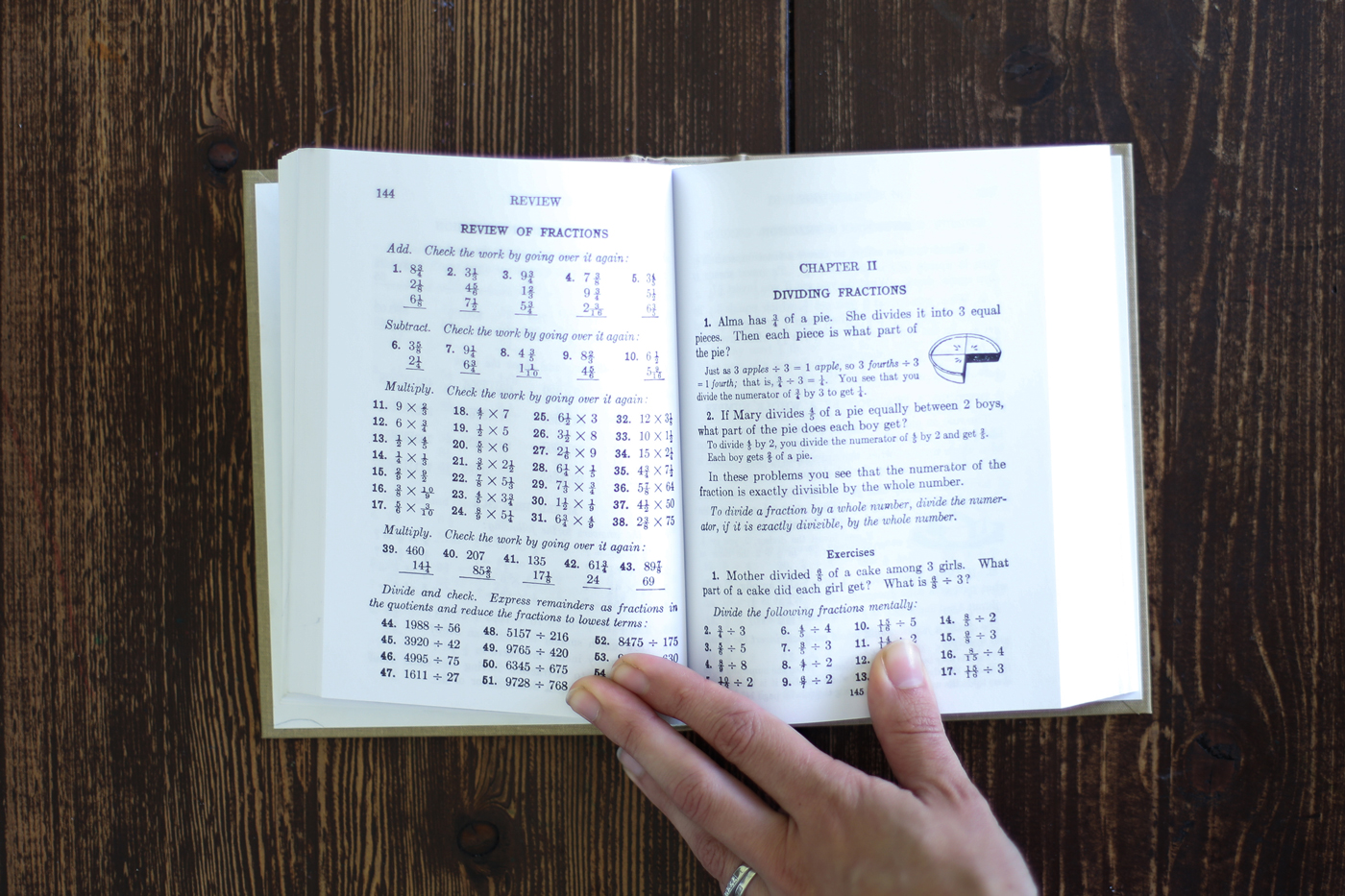
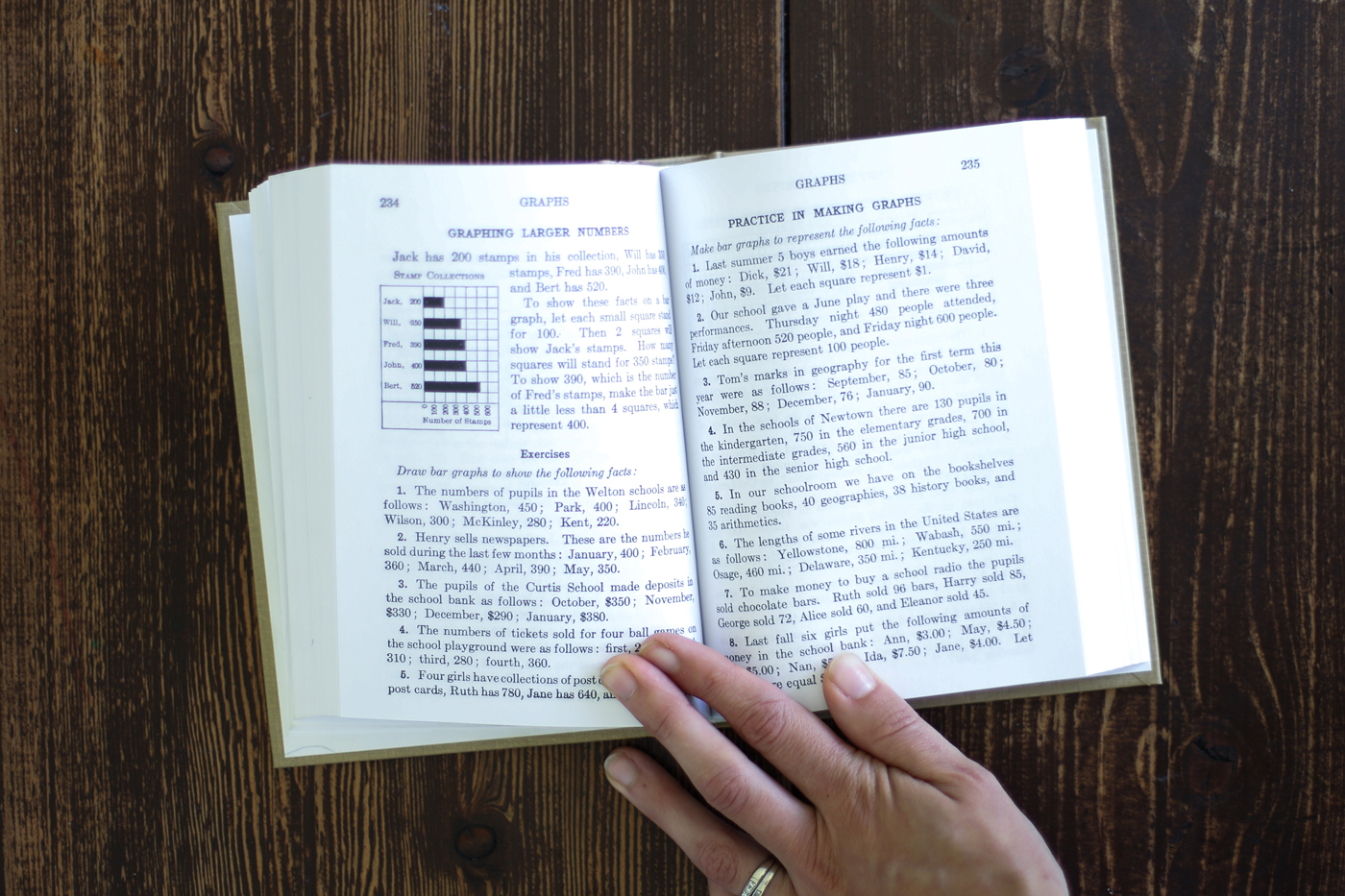
What we are using this year
I really didn’t want this review to be a personally biased post based on what I like and don’t like because every family is so different. Hopefully in the video and information above you feel you get a good overview of the pros and cons of each program. However, I know that a lot of people who feel like they identify with my homeschool style and teaching style like to know what I am using. If that is you today, then I’ll share what we currently love and use in our homeschool (updated for the 2018/2019 school year). This year we are using Math Lessons for a Living Education for grade K, 1, and 6. We love this program, it aligns so well with my vision of Charlotte Mason homeschooling, it is not too teacher intensive and yet we love the relational aspect of the stories. I love that it doesn’t take us very long to do and that it is easy to bring into our day.
I have one little man who breaks the mold, he hates school in any form. He hates reading, hates writing, and hates any work. Because of that, anything that is fast and easy is ideal for him and we decided to try the new Teaching Textbooks online version for this year for him. So far it is working fantastic for him and it takes the weight of teaching one child off my back.
For my 9 year old daughter, we are using RightStart math level C this year. She struggles with learning and big picture concepts and the hands on/game/reading/writing blend of this program is the best fit for her. It wouldn’t be my top pick for both price range and how teacher intensive it is, and yet I cannot deny the results for her and so I am making it work with our day and HIGHLY recommend it if your child has any learning challenges and needs extra help with math. AMAZING program, easy to use, and honestly, worth the money and time investment.
If you want to see the full list of curriculum we are using, check out my curriculum reveal post for 2018/2019 here.
Watch the full homeschool math comparison video below!
Comment Below
What math do you love and why?

